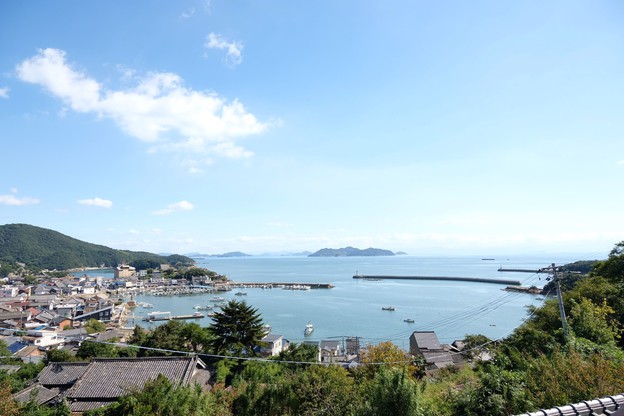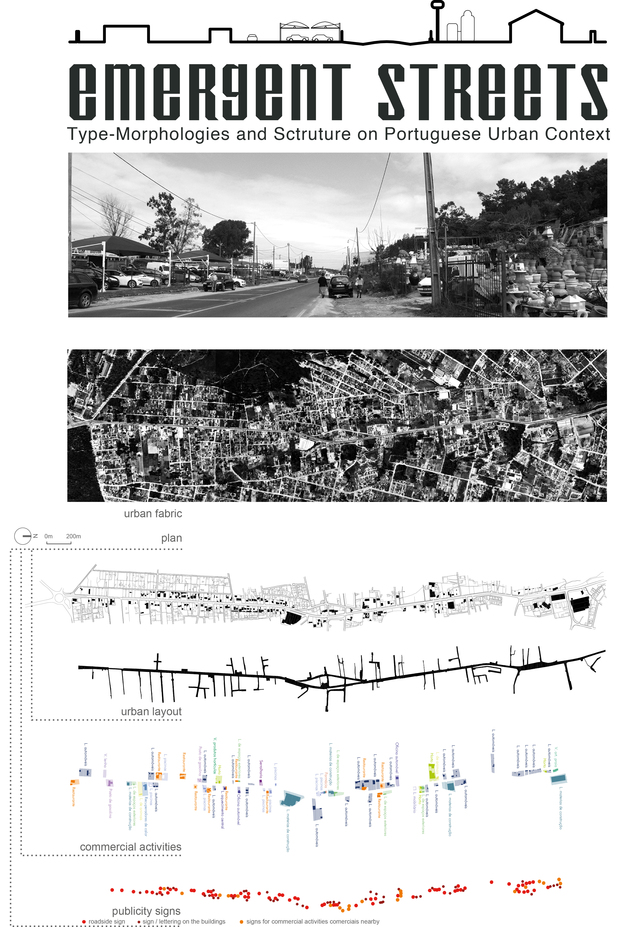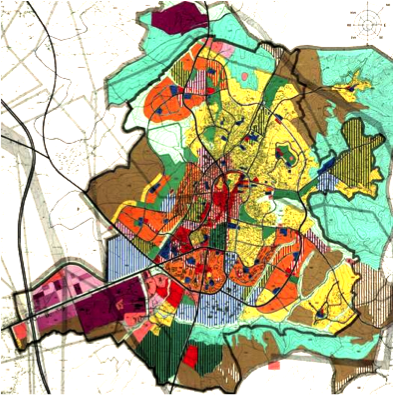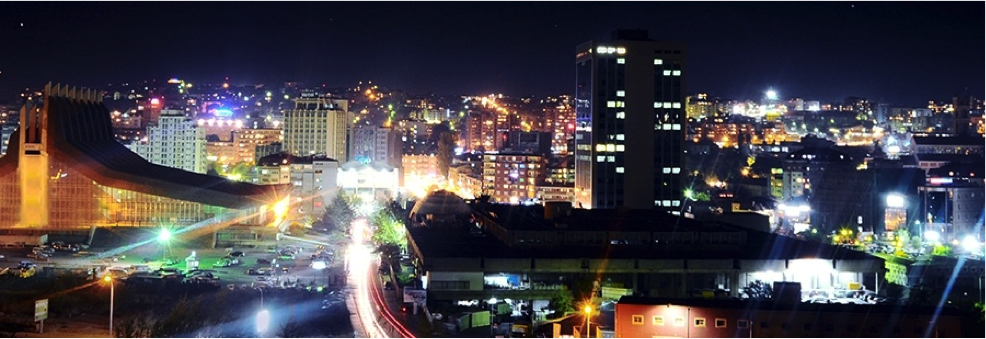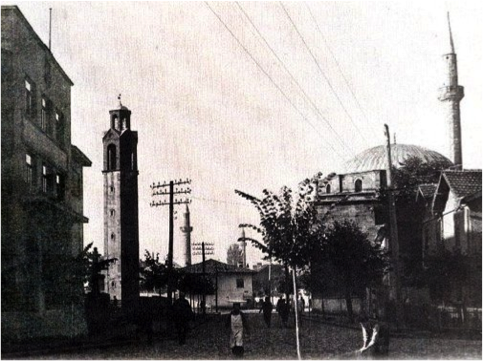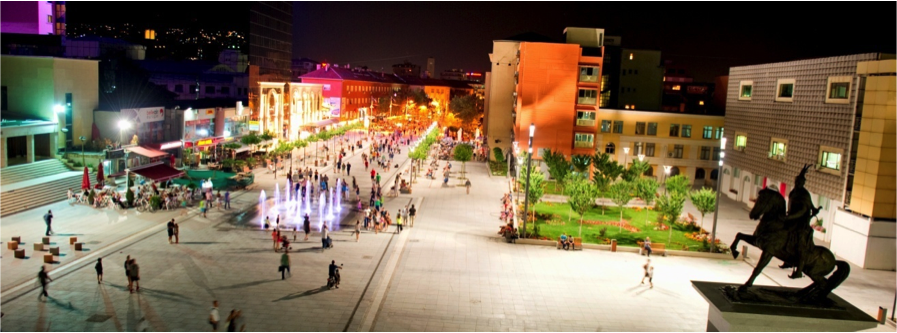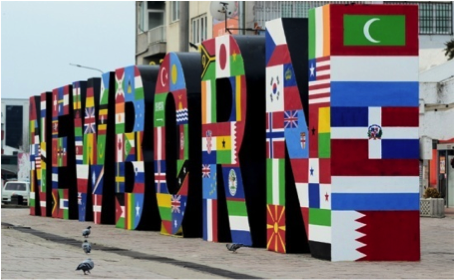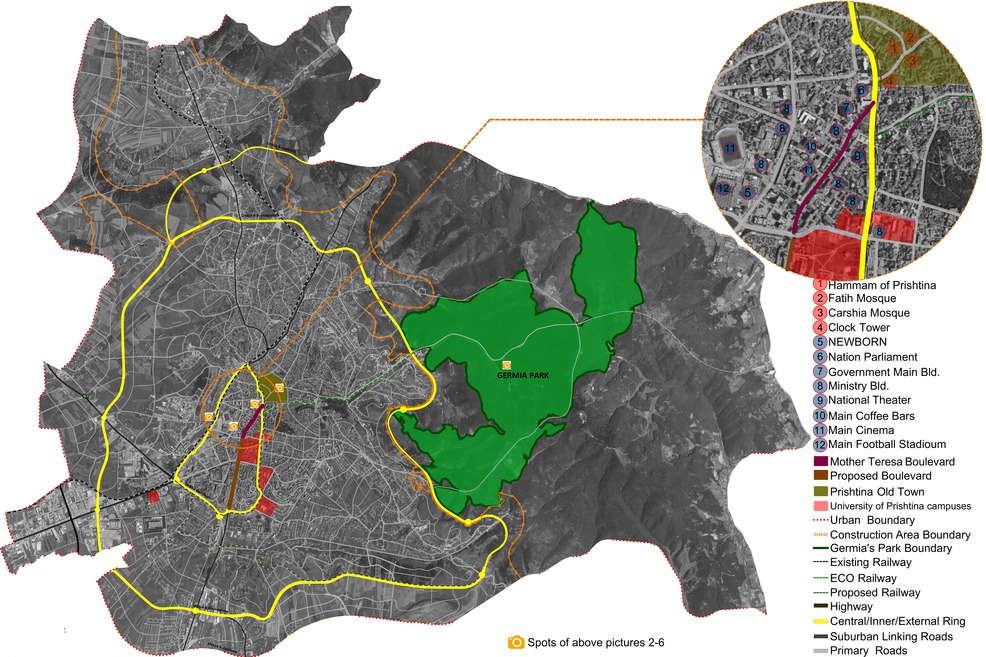Survey in Tomo
My name is Zhaoting Wei, a Chinese student studying in Sweden. As an exchange student, I will stay in The University of Tokyo, Urban Design Lab to study for one semester. Last week, I went to a lovely small town called Tomonoura with Prof. Nakajima and some of my friends from UD Lab for site research and vacant houses survey. This is my first time to take part in a Japanese project. Here, I am going to talk about my experience and impression about Tomonoura and this site research.
new member introduction: João Silva Leite
João Silva Leite born in Lisbon, Portugal, in 1981. João is graduated, in 2005, in architecture and urban planning at the Faculty of Architecture of the University of Lisbon, where in 2012 completed a master thesis in Urban Design with the theme "Commercial Road. Morphological Interpretation of a new urban element at Lisbon Metropolitan Area”, recently awarded in the IX BIAU (Architecture and Urbanism Iberoamerican Biennale) as the best master thesis in urbanism.
留学生コーナー第27弾! An Essay by an International Student Vol. 27
第27回の今回は、コソボ出身の留学生、Dastid Feratiさんからその都市計画にも関わっていたコソボの首都、プリシティナの魅力を伝えてもらいます!
|
PRISHTINA: Political, Financial and Cultural Capital of Kosovo |
My name is Dastid FERATI, a graduate architect from Kosovo. Currently I am a research student in University of Tokyo, Urban Design Lab. In this article I am going to talk about Prishtina, the capital and the biggest city in Kosovo, history, urbanism, and the most attractive places of the city.
Prishtina, is the capital and largest city of Kosovo. The city has a majority Albanian population alongside other smaller communities. It hosts the highest and most important concentration of political, institutional, cultural, administrative, financial and residential activities, supported by complete coverage of urban services. The city is home to the University of Prishtina and is served by the Prishtina International Airport.
The city has been inhabited for nearly 10,000 years. Early Neolithic findings were discovered dating as far back as the 8th century BC. During the Roman period, it was part of the province "Dardania" and was considered one of the most important Roman cities in the Balkans. In the 2nd century AD, Prishtina (ancient name Ulpiana), suffered tremendous damage from an earthquake in 518 AD.
On 1569, the city had 629 houses in 29 neighborhoods, which indicates that Prishtina, from the end of the sixteenth century was an important political, economic and administrative town of Ottoman Empire.
In Kosovo's war in 1998-1999, Prishtina, as many other Kosovo's cities, were quite destroyed and the people were forced out of their houses, until June 1999, where the NATO troops entered the Kosovo.
|
Fig.1. Master Plan of Prishtina - 1988 |
Prishtina's Urbanism.
Due to lot of political situations, it was hard for the authorities to continuously plan the city. The earliest official Master Plans, dates back to 1937, which included the area of 192 Ha. Further master plans were made in 1948, 1953, 1967, 1969, 1988 (fig.1) to finally the post war time where continuously plans have been made every certain years.
Prishtina the first touristic destination in Kosovo.
The number of visitors that have visited the city during 2012 has grown for 39 % in comparison with year 2008. It is a place that is known as a university center of students not just from Kosovo, but from regional countries like Albania, Macedonia, Montenegro, Serbia and much more. It represents a plateau of the combination of native, Ottoman and Western culture. Its people are known for hospitality and religious tolerance.
Kosovo has the youngest people in Europe, with 27.48 % under the age of 15 and around 23% of the people belong the group age of 16-27, although this phenomena is decreasing, after the war.
Making it more interesting to visit and to live are numerous of historical monuments. A large number of these monuments date back to the Byzantine and Ottoman periods. A lot of these monuments where destroyed in the wars during the XX century, but fortunately some of them have been preserved, including mosques, churches, Ottoman bath, public fountain, clock tower, several traditional houses, etc.
|
Fig.2. A part of Prishtina during the night |
Cultural and Architectural Significance of Prishtina Old Town
The old town of Prishtina, located in the center of the city, is one of the most attractive sites.
The Great Hammam of Prishtina is one of the several Ottoman era monuments located in this neighborhood. It was build during XV century. During the months of summer and spring, it was used as a meeting place. It is close to other monuments such as: Clock Tower (1764) ,Çarshia Mosque(XV century ), Fatih Mosque(1460) etc and a lot of private houses build in XVIII and XIX century, what together they are a symbol of the old and attractive Prishtina. (fig.3)
Buildings in the picture 3, are still well preserved, but additional buildings were built later close to them.
|
Fig.3. Prishtina old town 1940s. Left: Clock Tower; Right: Fatih Mosque |
Germia Park a natural environment inside town
Germia is a regional park in the East of Prishtina. It covers an area of 62 km2. This mountain massif is very attractive. Its highest point is 1050m above sea level and its lowest is 663 m. It has a rich fauna with 63 species of animals and a variety of about 600 species of flora. It is located just 10min driving, from the center of city.
It is the most appropriate site in town, for hiking, biking and other recreation. Most of the locals spend time there. It is very crowded during the weekends, where the different aged people meets. It is not allowed to build in this area, and lately it has been asked from locals to forbid the entry of vehicles inside the park.
Older people hiking, middle-age barbeque or relax in the wooden cafeterias and the young people playing sports, riding bikes, rolling or just some street arts, make this park very attractive, for what locals are very proud of it.
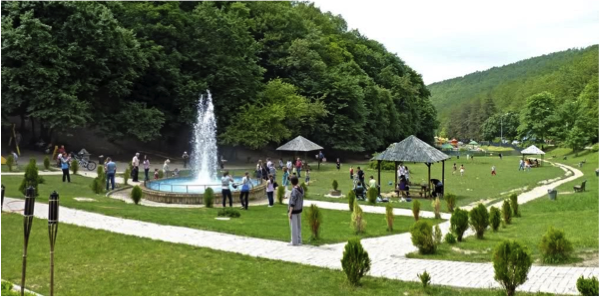 Fig.4. Germia Park during weekdays.
Fig.4. Germia Park during weekdays.
|
Fig.5. Mother Teresa Boulevard - 2013 |
Diversity Activities in Mother Teresa Boulevard
An other place, where a lot of activates goes on all the time is the "Mother Teresa" Boulevard, named after the famous catholic sister and missionary mother Teresa, who was an Albanian as well.
Laying in the very center of the city, the most important building are faced to this boulevard, such as Government, Nation Parliament, National Theater etc. It is famous also for the shops, cafeterias, restaurants, offices and residential as well. The residential apartments in this area are the most expensive in the city. Its current length is 807 m, but with the new Master Plan 2013, it was proposed that the boulevard to extend for an additional 1200 m.
It is very attractive, not just because of the position in the city, but also for the lot of activates going on, such as festivals, street arts, different aged people just relaxing and walking through.(fig.5)
NEWBORN, a new country in Europe.
Close to the boulevard is the "NEWBORN" sign. It has been unveiled on 17 February 2008, the day that Kosovo declared its independence. It used to be yellow color with the signatures of the people that attended that day of the unveil, including the President and Prime Minister. Now, it is decorated with the 102 flags that recognized Kosovo as state.
Last year, it was used by the famous singer Rita Ora to make her video of the song "Shine ya Light".
|
Fig.6. NEWBORN Monument- 2014 |
Coffee bars and clubs : locals way of recreation.
Coffee bars are a representative icon of Prishtina and they can be found almost everywhere. It is a habit of the locals to spend their free time and breaks in these cafeterias. The most famous ones are located in the center, so during the day, they are very crowded, with different aged people.
The capital is also known for its night life, with crowded and safe clubs, usually with famous singers and DJ's. Locals people like dancing and hanging out in these clubs. In the weekends, these clubs are crowded until morning, and before they are closed, other people wake up and go in the cafeterias for morning coffee, in what way makes Prishtina a city that never sleeps.
Conclusion
Prishtina, although with not big area, it is a high density city. I think that conceptually it works as many other cities in world, but due to economic difficulties, it has lower quality services (such as public transport). I consider Prishtina as a city of diversity, where the old buildings meet the contemporary ones, suitable for all ages, where the main Universities, institutions, theaters are located, offering the best day cafeterias and night clubs, where the main festivals, art and sports events are held, richest city in Kosovo with most opportunities and finally suitable for all ages.
I always wanted to live in a big city but where most of functions are in walking distance or close enough, where you can feel the antic and contemporary in the same time, closer to art, sport and cultural events, a city with quiet places (parks) and with nightlife. For that, I feel that Prishtina best fulfills these requests, than other cities in Kosovo.



